If you’re one of the 3 million Canadians who suffers from seasonal allergies, you might feel like you have tried everything to make your symptoms manageable. Unfortunately, dust and pollen don’t give up easily. It might be time to try one of the more unconventional ways to deal with spring allergies.
From pet baths to duct cleaning, we’ve gathered a few unique allergy solutions you may not have tried.
1. Use a Hygrometer
One of the best ways to deal with spring allergies is to make your home a haven from allergens. That means dealing with one of an allergy sufferer’s worst enemies: the dust mite. Not only are many of those allergic to pollen also sensitive to dust, but the presence of dust mites can make spring allergy symptoms even worse.
There is a direct relationship between the prevalence of dust mites and the humidity inside your home. Dust mites thrive when the humidity is 50% or higher; the lower it goes, the lower the dust mite population.
Try measuring the humidity with a hygrometer. If it is above 50%, it may be worth investing in a dehumidifier.
Smart thermostats like the ecobee4 and the iComfort can also monitor the humidity inside your home.
2. Bathe Your Pets More Often
Pollen has a knack for clinging to hair and fabric. If your pets spend lots of time outdoors (or a brief time in a forested area), those irritating pollen particles can enter your home via your pet’s fur.
Short of keeping them indoors, there is no easy way to prevent your pets from picking up pollen. What you can do is wash your pet’s feet and brush their fur before they re-enter your home. Giving your pets more frequent baths can also help.
3. Give Your Walls a VOC-Free Makeover
Volatile organic compounds (VOCs) are chemical particles that can originate from a variety of household products. While not harmful when the products are used as intended, VOCs can aggravate seasonal allergies and other environmental sensitivities. One of the most common sources of household VOCs is latex paint, which emits potentially harmful fumes into the air as it dries. If a home makeover is one of the things on your spring to-do list, consider using a low-VOC or non-VOC paint. Many of the big-brand paint companies market these alternatives under an eco-friendly banner.
4. Wash Your Pillows
Fair warning: you might want to skip this point if you’re on lunch break.
Seasonal allergies are made worse by the presence of household allergens like dust mites. These microscopic pests thrive in warm places with a steady supply of their favourite food: skin flakes. Thus, pillowcases are common habitats for dust mites. No wonder you wake up with a headache!
One expert recommends washing your pillowcase every three weeks and cleaning the pillow itself every three months. Replacing the pillowcase every six months is another smart allergy solution. Plus, you may sleep sounder knowing your pillow is not crawling with dust mites.
5. Upgrade Your Air Filters
If you have central air or heating, your HVAC equipment will come with air filters that help to prevent airborne allergens from re-circulating through the air ducts. It is important to clean (or replace, if they are single-use) these filters at least once every three months to maintain energy efficiency. Those who suffer from seasonal allergies may also benefit from an air filter upgrade.
All air filters have a Minimum Efficiency Reporting Value or MERV rating, which gauges how effectively it stops contaminants. The higher the rating, the fewer dust and other particles can pass through it.
Upgrading to a higher-MERV air filter can be an excellent way to deal with spring allergies – if your HVAC system can handle the air flow, that is. We recommend consulting the manufacturer’s guidelines before making the switch.
6. Put Stuffed Toys in the Freezer
Plush animals and other fuzzy toys are other places dust mites can hide. If the toys are not washing machine-friendly, there’s another way to deal with this spring allergy irritant: freezing them.
Place the toy in a freezer bag, then freeze it for 24 hours to eliminate any dust mites living on its plush surface. You can do the same for other fabrics that are not machine-washable.
7. Get an Air Duct Cleaning
Central air conditioning systems distribute cool air throughout your home via the air ducts. If those ducts are full of dust mites, that refreshing breeze will be bad news for your allergies.
You would be surprised just how much dust those passages can hold. When our technicians are out duct cleaning in Toronto and the surrounding region, they remove an average of six pounds of dust per home!
Duct cleaning is only necessary every few years, but it can make a world of difference for those who suffer from spring allergies. Feel free to contact us for a quote for duct cleaning in Toronto, Oakville, Mississauga, and other parts of the GTA. We use a NADCA-certified, truck-mounted vacuum and compression system to get the job done right.
Image: Daria Minaeva







